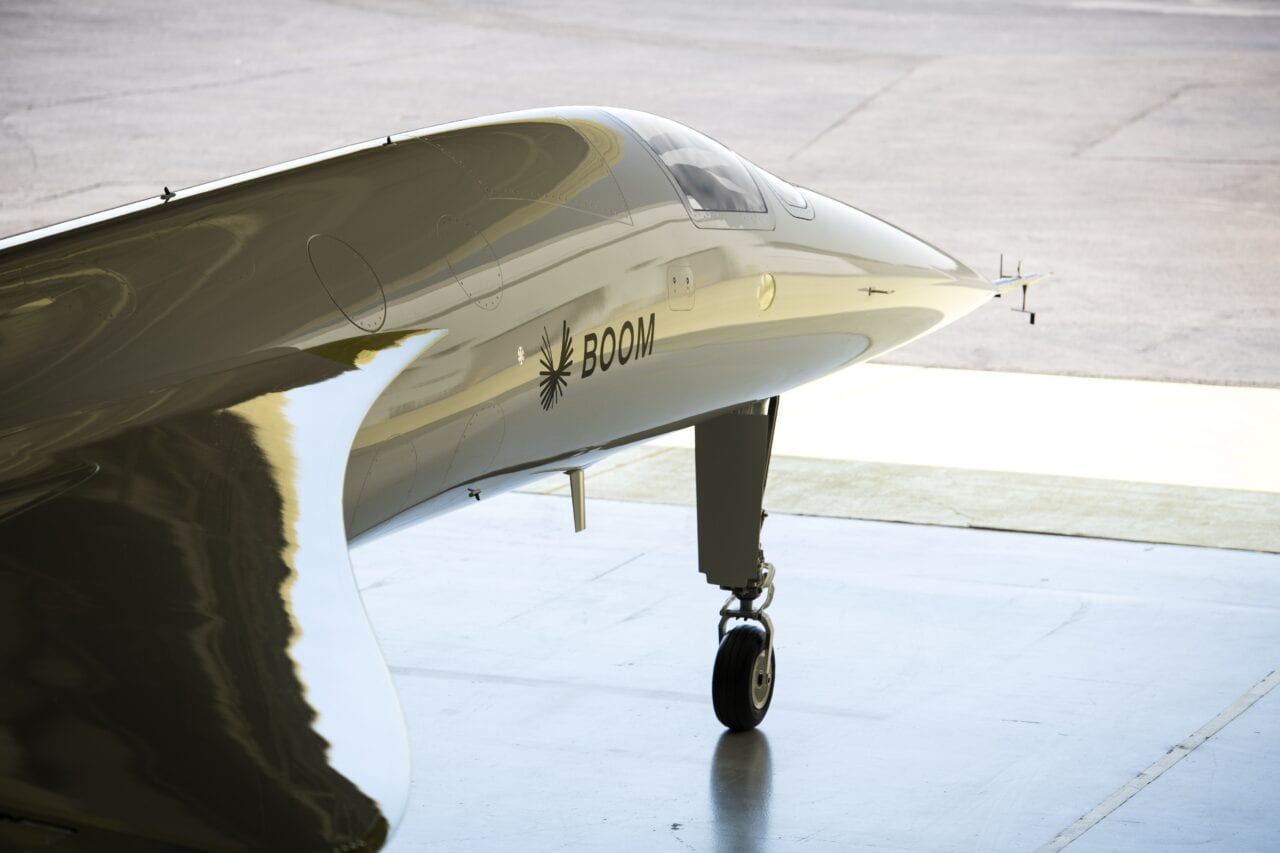
The FAA has established new rules for supersonic flight testing in U.S. airspace. Pictured here is XB-1, a supersonic demonstrator aircraft that Colorado-based Boom Supersonic will use this year on its path to developing a supersonic passenger jet in the near future.
The Federal Aviation Administration (FAA) announced final rules for civil supersonic test flights in the United States in a Jan. 6 press release. Supersonic flights in the U.S. are still prohibited, however, these rules provide criteria for applications for approved special flight authorizations.
“The FAA supports the new development of supersonic aircraft as long as safety parameters are followed,” FAA Administrator Steve Dickson, said in a press statement. “The testing of supersonic aircraft at Mach 1 will only be conducted following consideration of any impact to the environment.”
Rules for supersonic flight tests were first proposed in June of 2019 and modified in April 2020 for noise certification requirements. The final rules mostly follow the earlier proposals with three modifications: the creation of a designated office for questions and applications, the organizing of all application requirements into a list, and proposed addition of a new reason for flight testing to accommodate future noise certifications, according to the rule.
“Today marks a significant milestone in the development of civil supersonic flight,” Aerion CEO, Tom Vice, told Avionics in an emailed statement. “We are encouraged that the U.S. Department of Transportation and the Federal Aviation Administration issued a final rule that streamlines and clarifies procedures to obtain FAA approval for supersonic flight testing in the United States. As we approach production and flight testing of the AS2, this rule provides our company the ability to test the AS2 aircraft over land in addition to overwater testing currently planned.”
All supersonic aircraft test flight applications must consider environmental impacts under the National Environmental Policy Act (NEPA). The FAA will make this determination when evaluating applications in accordance with the Council on Environmental Quality (CEQ) regulations, according to the rule. With supersonic test flights, noise pollution is a concern.

Illustration of NASA’s planned Low Boom Flight Demonstration aircraft as outlined during the project’s Preliminary Design Review.
Photo: NASA / Lockheed Martin.
Boom Technology, a startup also known as Boom Supersonic designing a passenger supersonic transport aircraft, requested the FAA create a streamlined NEPA process for flight authorizations citing evidence that the FAA would be unlikely to find any significant sonic boom noise impacts from individual supersonic flight test programs, according to the ruling. The FAA disputed this evidence and the final rule requires individual evaluation for flight test authorization.
“The establishment of “parameters” relating to the NEPA review of supersonic flight tests would require an analysis of part 91 operations in order to justify a categorical exclusion, and the supporting documentation would need to go through the public process required for all changes to FAA’s NEPA procedures 11 as set forth in Order 1050.1F,” the ruling states. “Although at some point in the future FAA might undertake the necessary analysis and public review process to establish such a categorical exclusion, absent a change to Order 1050.1F, FAA currently must individually consider the potential environmental impacts of requested special flight authorizations.”
A new provision added to the final rules will allow for special test flight authorization when measuring noise characteristics of an aircraft for compliance with noise certification tests, the rules state. While there are no noise standards at this time the FAA said this provision was forward-looking for when future standards are adopted.
“We’re pleased that the FAA remains committed to facilitating the return of supersonic flight through data-driven regulation,” a representative for Boom told Avionics. “As we plan for the start of our XB-1 flight test campaign later this year, we welcome the FAA’s interest in clarifying supersonic test flight rules.”
GE Aviation joined Boom in requesting that the FAA create an expedited application process with pre-approved parameters for certain circumstances, the ruling states. The FAA refused this request as well stating that they do not believe pre-approved circumstances can be determined and that because environmental considerations can be time-sensitive it would not be possible to make prior determinations. The final rule states that the FAA will accept previous environmental analysis for a test flight area if the information is still current or has been updated to meet requirements.
Multiple companies and organizations including GE Aviation, Aerospace Industries Association (AIA), General Aviation Manufacturer’s Association (GAMA), Supersonic Flight Alliance (SSFA), AeroTEC, and Boom asked the FAA to allow multiple manufacturers to use a single test flight area, according to the ruling. There was concern from commenters on the proposed ruling that test areas need to expand beyond military operation areas (MOAs) citing concerns over crowded airspace.
The final rule from the FAA states that test flight areas are not limited to one applicant and they encourage applicants to request alternative flight test areas that meet regulations and environmental impacts. The ruling states that a single test flight area may be used by multiple applicants, but the test area will need to submit its own application. Once this application is approved, applicants can submit information with a description of the same requested test site.

X-59 QueSST low-boom demonstrator design concept. Photo: Lockheed Martin
Lockheed Martin requested that the FAA establish dedicated supersonic test flight areas. The FAA declined to include dedicated test areas or civilian supersonic corridors in the final rule.
The proposed rule stated that applicants must show why flight tests must be conducted over land and not the ocean, according to the ruling. The final rule was modified to include “the applicant must indicate why its intended operation cannot be safely or properly accomplished over the ocean at a distance ensuring that no sonic boom overpressure reaches any land surface in the United States.”